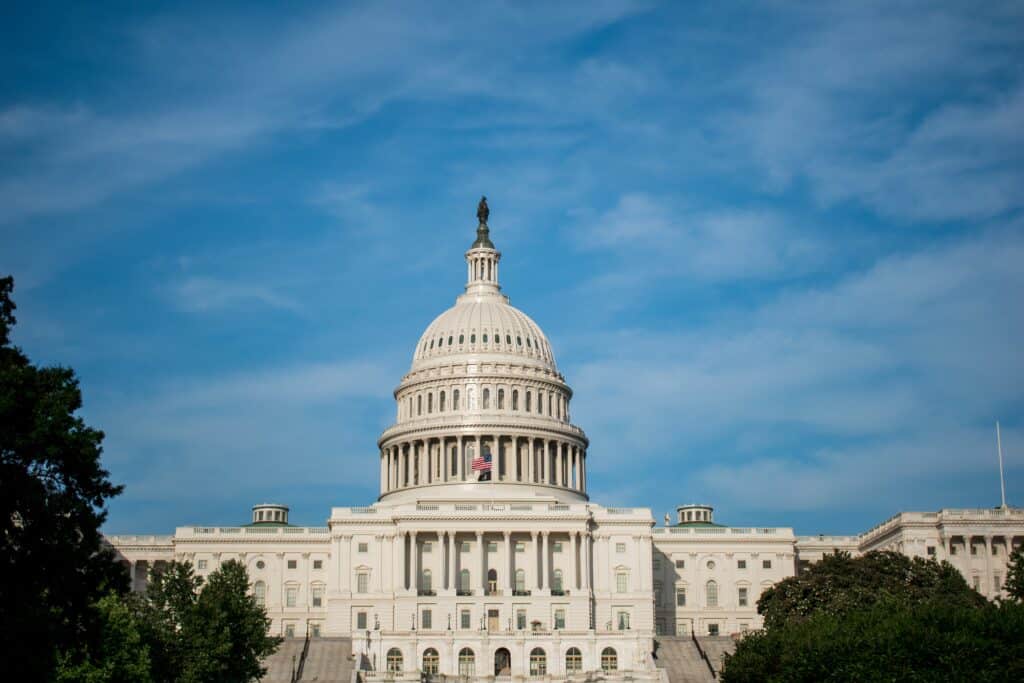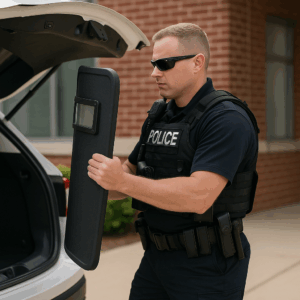School safety issues have increasingly become a top priority for educational institutions, as ensuring a secure environment for students, staff, and parents is paramount for fostering academic growth and development.
A collaborative approach involving school administrators, teachers, law enforcement, and security personnel is essential in addressing these challenges.
In this article, we will discuss some of the most pressing school safety concerns and the measures taken by educational institutions to tackle them.
One of the key aspects of school safety is the protection of students and staff from physical harm, whether it be through accidents, natural disasters, or malicious acts.
To mitigate these risks, schools must establish and enforce strict policies and procedures, such as creating a comprehensive emergency response plan, conducting regular safety drills, and training staff to recognize and address potential hazards.
Additionally, schools must invest in appropriate security measures, including surveillance cameras, access control systems, and communication tools to ensure quick and efficient responses to incidents.
While addressing physical safety is crucial, it is also essential to recognize the impact of mental and emotional well-being on overall school safety.
Educators, school counselors, and administrators must collaborate to create a supportive environment that promotes positive mental health among students and staff.
By doing so, schools can address a wide range of issues, such as bullying, harassment, and the increasing prevalence of mental health disorders, thereby creating a safer, more inclusive learning community for all members.
Types of School Safety Issues
Violence and Shootings
Violence in schools is a significant concern that can have far-reaching effects on students, staff, and the school community.
One of the most alarming manifestations of violence is school shootings, which have unfortunately become more common over the years.
High-profile cases, such as Columbine, Sandy Hook, and Uvalde, have sparked discussions on how to prevent and respond to such incidents.
Some measures taken to address this issue involve the presence of metal detectors, improved security systems, and increased police presence in schools.
Bullying and Harassment
Bullying is another pervasive safety issue faced by schools.
It can occur in various forms, such as physical aggression, verbal harassment, or through social media.
The negative impact of bullying on students can lead to lasting emotional scars, hinder academic progress, and even result in tragic incidents.
Schools must establish clear anti-bullying policies, create a supportive environment, and implement intervention programs to tackle this problem.
Mental Health and Emotional Safety
Mental health and emotional safety are equally vital aspects of school safety.
A positive school climate is essential in fostering a sense of belonging and security among students.
Some factors that contribute to a healthy school environment include open communication, active social support systems, and access to mental health resources.
Counseling services, peer-to-peer support, and programs such as the Sandy Hook Promise can help students cope with stress and emotional challenges.
Addressing mental health and emotional safety issues within schools is crucial for students’ overall well-being and academic success.
Physical Safety Measures
Tools for Access Control
A crucial aspect of school safety is controlling access to the building and its premises.
There are various tools and technologies available that schools can implement to achieve this:
- Key card or badge access systems: These systems require staff and students to use a designated card or badge to enter specific areas within the school.
- Visitor management systems: These tools help track and manage visitor access within the school. They often include a sign-in process and temporary visitor badges.
By implementing these tools, schools can restrict access to unauthorized individuals and ensure a safer environment for staff and students.
Security Cameras
Security cameras are a widely used tool for maintaining school safety.
Strategically placed cameras throughout the school grounds can help deter criminal activity and monitor general student behavior.
Important locations for security cameras include entrance and exit points, hallways, and gathering areas such as cafeterias and playgrounds.
Regular monitoring of camera feeds by school security personnel ensures timely response to potential safety issues.
Metal Detectors
Metal detectors can serve as an effective security measure for schools.
These devices are often placed at main entry points and help detect weapons or other dangerous items being brought into the school.
While their use may be controversial in some communities, they have been proven effective in preventing and reducing incidents of school violence.
Emergency Drills
Regularly conducting emergency drills is essential for school safety, as these exercises ensure that students and staff know how to respond in crisis situations.
Different types of drills to consider are:
- Fire drills: These familiarize students and staff with evacuation procedures.
- Lockdown drills: These prepare the school community for potential threats, such as an active shooter scenario.
- Severe weather drills: These help students and staff respond to dangerous weather events like tornadoes or hurricanes.
Schools can turn to resources like the SchoolSafety.gov website for guidance and best practices regarding emergency preparedness.
By investing in these physical safety measures and tools, schools can create a secure environment for students and staff, while also building genuine confidence within the broader school community.
Mental Health and Emotional Support
School Psychologists and Psychiatrists
School psychologists and psychiatrists play an essential role in addressing school safety issues related to mental health.
They are trained professionals who can identify, assess, and treat various mental health concerns affecting the students.
They collaborate with teachers, school administrators, and parents to develop tailored intervention strategies to support students’ mental well-being.
In particular, school psychologists focus on assessing and intervening in behavioral and learning problems, while psychiatrists can prescribe medication and provide therapy for more severe mental health issues.
Having these professionals on campus can greatly contribute to a safe and supportive school environment.
Counseling Services
Counseling services are another crucial aspect of school safety concerning mental health.
They provide a safe and confidential space for students to openly discuss their emotions, experiences, and concerns.
Counselors are trained to assist students in overcoming personal and academic challenges, addressing issues such as stress, anxiety, depression, and bullying.
Schools can improve safety by implementing various counseling services, including individual and group sessions, crisis intervention, and conflict resolution.
A well-facilitated counseling program can help prevent and address potential safety issues related to students’ mental health.
Peer Support Programs
Peer support programs can be a valuable addition to addressing school safety issues related to mental health.
These programs involve students helping their peers by offering guidance, support, and understanding.
They can take different forms, including peer mentors, peer mediators, or peer-led support groups.
These programs promote a sense of community and solidarity among students and empower them to take an active role in maintaining a safe school environment.
By teaching students to look out for one another and support each other’s emotional well-being, schools can effectively tackle mental health-related safety issues.
Roles and Responsibilities within School
School Administrators
School administrators, including school leaders and boards, play a crucial role in maintaining safety.
They are responsible for implementing safety policies, procedures, and guidelines that ensure the well-being of students, teachers, and school staff.
This includes conducting risk assessments, coordinating with law enforcement, and managing security measures throughout the school premises.
They should be knowledgeable about local and national laws regarding weapons and other school safety concerns to create a secure learning environment.
Educators and Teachers
Educators and teachers also hold significant responsibility in addressing school safety issues.
They are expected to remain vigilant and report any suspicious behavior, incidents, or potential risks to the school administration.
In addition to reporting, they must effectively communicate safety guidelines to their students and actively participate in school safety drills and training sessions.
They should be familiar with the school’s emergency response plans and evacuation procedures in order to assist during a crisis.
Parents and Guardians
Parents and guardians play an essential role in supporting the school’s efforts to maintain a safe learning environment.
They can contribute by:
- Openly discussing safety concerns with their children and emphasizing the importance of adhering to school policies
- Actively participating in school events and meetings related to safety
- Reporting any potential safety issues or threats to the school administration
- Encouraging their children to report any suspicious activity or concerns to a trusted adult
Law Enforcement and Security
Law enforcement and security personnel, such as school resource officers or private security firms, are vital in maintaining a secure learning environment.
Their presence can act as a deterrent to potential threats and provide a sense of security for students, staff, and parents.
They are responsible for monitoring the school grounds, responding to incidents, and collaborating with school administrators to keep the school community safe.
These partnerships should be continuously evaluated and strengthened to ensure maximum effectiveness.
By working together, these various entities can create a comprehensive approach to school safety that addresses potential risks and concerns, keeping students, teachers, and staff in a secure learning environment.
Collaboration and Community Involvement
School Boards and Safety Experts
In order to address school safety issues effectively, it is important for school boards to collaborate with safety experts.
These experts have knowledge of the latest technologies and best practices to safeguard schools from various threats, including natural disasters, acts of violence, and tragedies.
School boards should work closely with these specialists to conduct threat assessments, develop safety protocols, and implement appropriate measures to ensure the well-being of students and staff.
Safety experts can also help train school personnel to identify potential hazards and handle emergencies effectively.
This cooperation between school boards and safety experts is essential for preventing and mitigating safety concerns in schools.
School Community and Visitors
The school community, comprised of students, teachers, and parents, plays a crucial role in ensuring school safety.
By fostering a culture of shared responsibility, every member of the community can contribute to a safe and supportive learning environment.
This includes:
- Reporting incidents of bullying, violence, or other risky behaviors
- Participating in safety drills and training sessions
- Encouraging open communication between all members of the school community
Visitors also have a role in maintaining a safe school environment.
Schools should establish clear guidelines for visitor access and identification.
This may include signing in at the main office, wearing visitor badges, and being escorted by a staff member while on school premises.
These measures help minimize potential threats and unauthorized access to school facilities.
External Organizations and Partnerships
Collaborating with external organizations can provide additional support and resources for addressing school safety issues.
Partnerships can take various forms, such as working with local law enforcement for regular campus patrols or inviting community groups to offer educational programs on topics like conflict resolution and mental health.
One notable example of such collaboration is the Texas Association of School Administrators (TASA), which promotes school safety through partnerships with various state and national organizations.
TASA supports school districts in implementing effective safety measures, providing resources and guidance for best practices.
In conclusion, collaboration and community involvement are critical to addressing school safety issues effectively.
By working with safety experts, engaging the school community, and forming partnerships with external organizations, schools can create a secure and nurturing environment where students can thrive.
Legislation and Policies

School safety is a critical aspect of the educational environment. Legislators and policymakers have developed numerous regulations and guidelines to address various safety concerns in schools.
These approaches aim to ensure a secure atmosphere for students and staff, allocating resources and support as needed.
A key component of promoting school safety is the implementation of policies that protect students from harm.
These may include anti-bullying measures, codes of conduct, and disciplinary actions for violent or disruptive behaviors.
Schools are held accountable for providing a safe environment, which often involves coordinating with local law enforcement and first responders.
In addition to these on-campus measures, many schools have adopted comprehensive emergency response plans.
These plans outline protocols for various emergency situations, such as natural disasters, fires, or active shooter incidents.
By preparing for these worst-case scenarios, schools can minimize the risk of harm to students and staff.
To further enhance school safety, significant investment is made in safety-related resources.
This includes hiring or contracting school resource officers (SROs) or security personnel to maintain a physical presence on campus.
Schools may also invest in security infrastructure, such as surveillance systems, access control measures, and advanced communication technologies.
Finally, continuous professional development for educators plays a significant role in ensuring school safety.
This includes training in crisis management, threat identification, and mental health support for both students and staff.
Collaborative efforts between schools, law enforcement, and community partners can support educators in maintaining a safe environment for all.
In summary, legislation and policies surrounding school safety are designed to address a wide range of issues, from behavioral management to emergencies.
Commitment to a secure learning environment is a shared responsibility that involves ongoing investment, professional development, and collaboration with all stakeholders.
Conclusion and Future Steps
School safety is an essential aspect of creating a conducive learning environment for students.
Addressing various safety issues is crucial for fostering a healthy and secure atmosphere in schools.
Moving forward, policymakers and administrators should prioritize the implementation of comprehensive safety measures and policies that will address some key areas of concern.
One of the impactful steps schools can take is to implement comprehensive safety plans.
This includes updating school infrastructures to enhance security, providing ongoing training and resources for staff, and partnering with local law enforcement agencies to share expertise and provide support.
By implementing these safety measures, schools can create a safe and secure learning environment for all students.
Additionally, fostering a strong school-community relationship is crucial in addressing safety issues.
Engaging parents and community members in conversations about security concerns and enlisting their help for monitoring school safety can significantly reduce potential risks.
This collaboration can go a long way in identifying problem areas and developing preventive measures, thus improving overall school safety.
Finally, focusing on mental health and psychological support services within schools can help in recognizing and mitigating potential threats early on.
Providing resources such as counseling services and mental health support to students and staff can help to address emotional and mental health contributing factors.
In conclusion, tackling school safety issues requires a multifaceted approach involving collaboration between various stakeholders.
By investing in infrastructure and critical support systems, fostering strong school-community relationships, and providing mental health support, schools can ensure a secure and thriving environment for students and staff alike.
Frequently Asked Questions
What is the most common problem in school?
The most common problem in schools varies depending on local context, and may include issues such as bullying, academic pressure, or students’ mental health concerns. However, ensuring a safe and secure learning environment for all students is a top concern for educators and school administrators.
What are some major problems in schools?
Major problems in schools can include bullying, physical violence, discrimination, drug and alcohol abuse, and threats to the educational environment, such as vandalism or arson. Moreover, schools may face challenges in maintaining adequate prevention and response plans for emergencies, such as natural disasters or security incidents.
What measures can be taken to improve safety and security in schools?
To improve safety and security in schools, administrators should consider implementing measures like:
- Regularly assessing and updating safety plans and emergency response protocols
- Conducting safety drills for a range of possible emergencies
- Enhancing building security features, such as locks, alarm systems, or surveillance equipment
- Providing staff and students with safety training and resources
- Promoting a positive school culture to reduce instances of bullying or violence
- Collaborating with local law enforcement and community partners to assess and address potential risks
How do federal and state agencies address school safety issues?
Federal and state agencies offer several resources and guidelines to help schools address safety issues. This can include grants for safety initiatives, research, and reporting requirements, as well as partnerships with mental health providers and law enforcement agencies. Government agencies also release best practice guidance documents and provide technical assistance to help schools develop effective safety plans.
Why is school safety important for students?
School safety is important for students because it promotes a positive learning environment, supports students’ well-being, and contributes to their overall development. When students feel safe and supported, they are better able to engage in learning, form healthy relationships, and develop important life skills. Unsafe schools can significantly hinder the learning process and have lasting negative effects on students’ lives.
How can school communities develop a comprehensive safety plan?
Developing a comprehensive school safety plan involves identifying potential risks, evaluating existing protocols and resources, and creating action plans for various scenarios. Key steps in this process include:
- Conducting a thorough assessment of the school’s safety needs and potential hazards
- Engaging a broad range of stakeholders, such as staff, students, parents, and relevant community partners
- Developing specific goals and objectives for enhancing school safety
- Creating and updating policies and protocols in response to identified risks and needs
- Providing ongoing training to staff and students regarding safety protocols and reporting procedures
- Regularly monitoring and evaluating the plan’s effectiveness and making necessary adjustments






